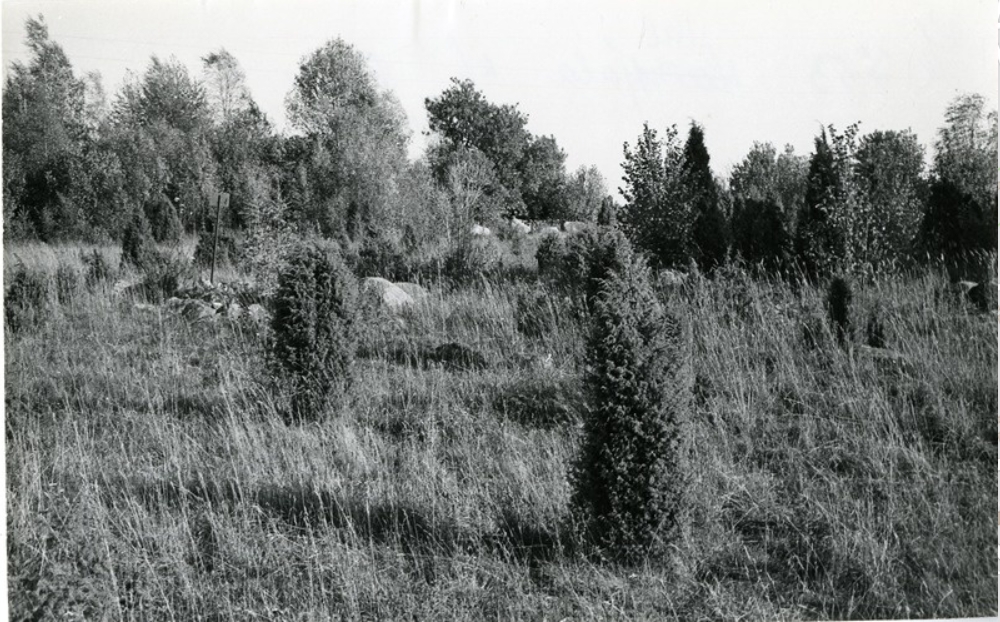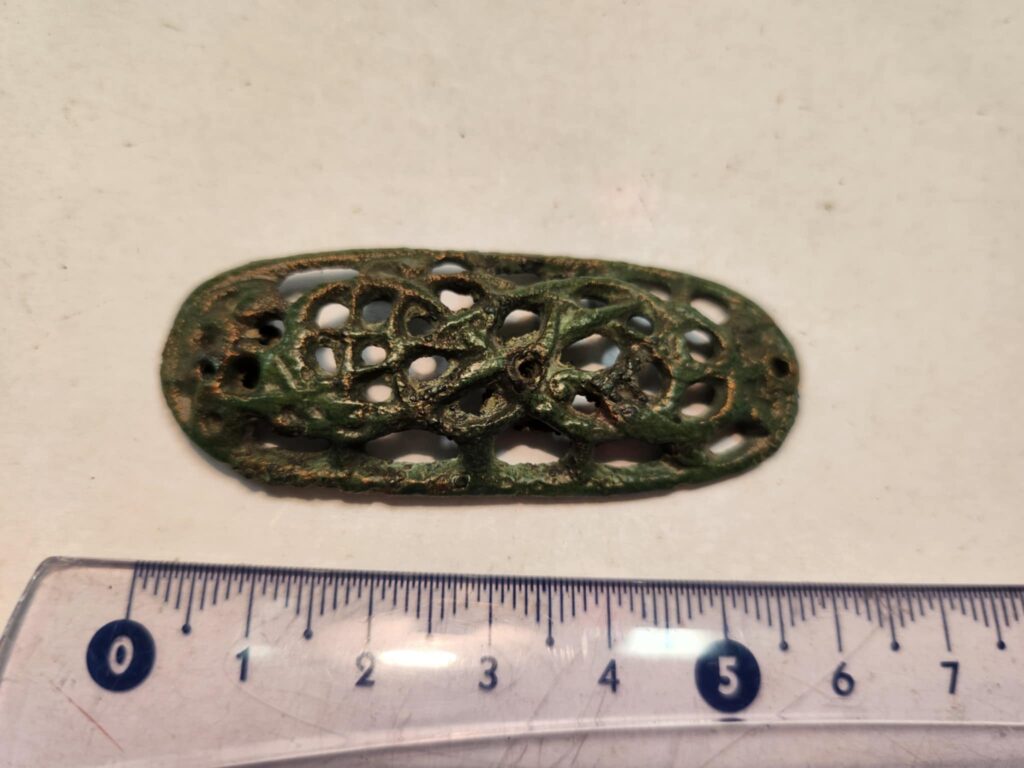Rahu burial site.
The stone burial site located in Rahu village near Valjala, also known as Kalmumägi, was discovered in the late 19th century during gravel extraction. Systematic archaeological excavations were carried out later, in 1959–1963, and was continued on smaller scale in 1980. Altogether, around 3000 artefacts have been collected from the site, making it one of the richest and most remarkable stone graves in Saaremaa. Based on the bones and artefacts, it has been dated to the Late Iron Age.
Structure of the burial site and burial customs
The Rahu burial site features cremation burials which were common on Saaremaa until the 13th century. Unlike some other burial sites on Saaremaa, there were no regular stone circles atop of the burials. This sets Rahu apart from, for example, Randvere and Viltina, although the burial customs show many similarities as well. Instead, the burial site was partly covered by a thin and uneven layer of stones. Individual burial spots were identified by dark, charcoal-rich patches with burnt bones, ash, and grave goods.

There are no traces of funeral pyres and the deceased were probably cremated elsewhere and their remains were afterwards brought to the burial site. Some dark patches without finds may represent places where ritual fires were made. Shards of pottery and animal bones suggest that the site continued to be used for funeral feasts and memorial rituals.
Use of the site and social background
Based on artefacts and excavation data, the site was mainly in use during the 11th–12th centuries, and partly also in the 13th century. Archaeologists have concluded that Rahu was not the burial place for the whole village community but belonged to an influential noble family. The site lies less than 3 km from the ancient Valjala hill fort and 2 km from Valjala church which became the most important political hub of Saaremaa in the 12-13th century.
The rich assemblage of weapons, silver, and bronze objects indicates that those buried there belonged to the higher social strata of society and they maintained extensive contacts with Scandinavia and the Baltic region. An extraordinary number of weapons or weapon parts have been found, some of them decorated with silver. There are also many items related to horses and horse riding. However, jewelry is the most common type of artefact that has been found.

A very special find is a 6 cm long azure mesh bronze brooch in the late Borre style, with elements of the Jelling style, which has exact parallels in Ojamaa. This points to international contacts and Scandinavian artistic influences in the second half of the 11th century.
The Rahu burial site also contains 13th-century artefacts similar to those found in Christian burials around Valjala Church and in Valjala Manor. Therefore, it can be assumed that some people were buried in the pagan manner, i.e., cremated and placed in the old stone burial site, even at a time when Saaremaa was officially Christian.


